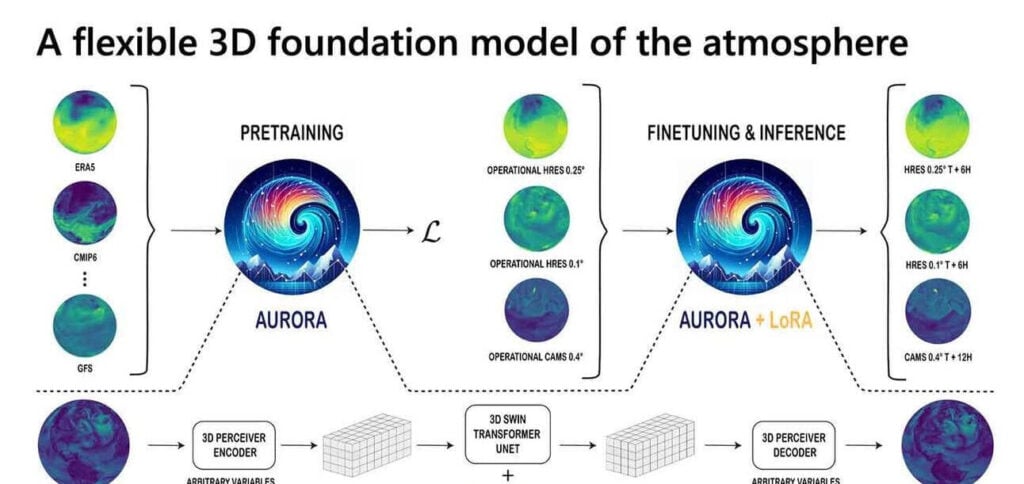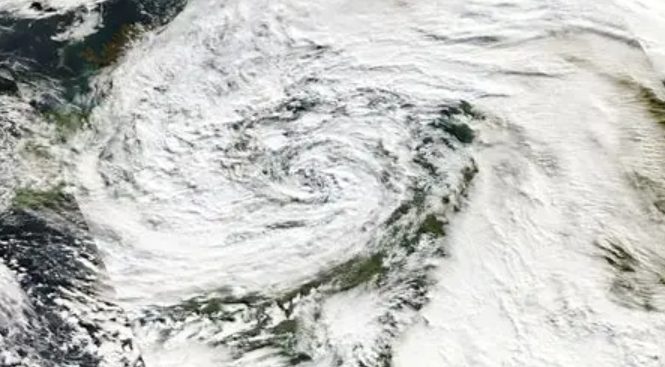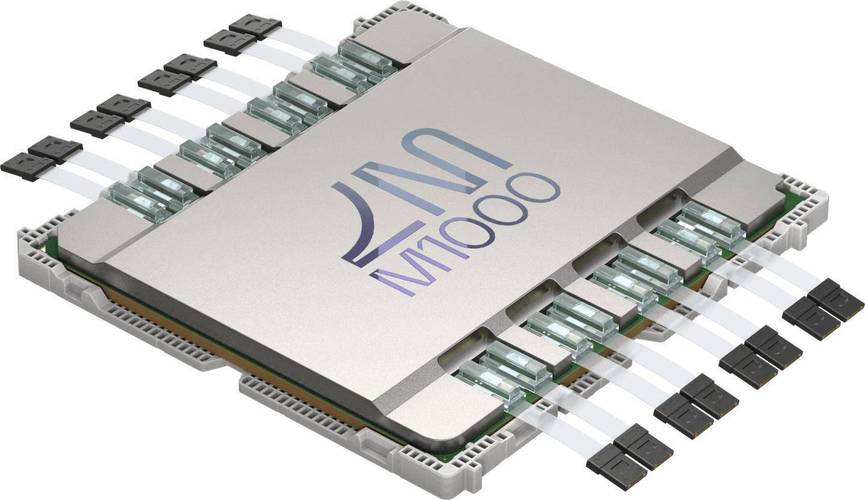Microsoft Aurora: The AI Climate Model Reducing Forecast Costs by 100x

Traditional climate forecasting has long been trapped in a costly cycle: while extreme weather events—from heatwaves to hurricanes—demand faster, more precise predictions to protect communities, the supercomputers powering conventional models consume exorbitant energy and operational funds. This barrier has limited access to advanced forecasting tools to only wealthy nations and large institutions, leaving smaller regions vulnerable. Microsoft Research’s launch of Aurora, an AI-driven Earth system foundation model, in May 2025 upends this dynamic. By merging cutting-edge machine learning with unprecedented data scale, Aurora delivers high-resolution climate forecasts at a hundredth of the traditional cost, turning a once-exclusive technology into a tool accessible to more groups working toward climate resilience.
Aurora’s breakthrough hinges on its foundational model design, trained on over one million hours of diverse geophysical data—satellite imagery, ground-based weather station readings, and oceanographic sensors—the largest dataset ever assembled for climate AI. Unlike conventional models that rely on energy-hungry supercomputers to solve complex atmospheric equations through brute force, Aurora leverages a 3D Swin Transformer with perceiver encoders to learn patterns from massive datasets. This approach cuts computational demands by 5,000 times compared to systems like the European Centre for Medium-Range Weather Forecasts’ IFS. Operating at a 0.1-degree spatial resolution (roughly 11 kilometers at the equator), it captures fine-grained details such as localized storm formation while maintaining efficiency. The result is a dramatic cost reduction: a 14-day global forecast that once cost ten thousand United States dollars now costs under one hundred United States dollars.

Real-world applications highlight Aurora’s practical impact. In air quality forecasting, it outperforms traditional models in 74% of major urban centers, including London and Delhi, by integrating real-time pollution sensor data with meteorological trends—helping cities issue timely smog alerts for vulnerable populations. For tropical cyclones, Aurora surpassed predictions from seven leading global weather centers in all 2025 test cases, providing coastal communities with an extra 12 to 24 hours of warning time. Its flexibility also shines in renewable energy planning: researchers in Scandinavia adapted Aurora to predict wind patterns for offshore wind farms, reducing energy output forecasting errors by 38% and enabling more efficient grid integration. As Dr. Lena Olsen, a climate scientist at Microsoft Research, notes: “Aurora doesn’t just cut costs—it makes accurate forecasting actionable for groups that couldn’t afford it before.”
Crucially, Aurora’s open-source framework democratizes climate science. Unlike proprietary forecasting systems, its code and pre-trained weights are publicly available, allowing researchers in developing nations to customize predictions for local risks—such as droughts in East Africa or monsoons in Southeast Asia—without investing in expensive infrastructure. Early adopters in Kenya used Aurora to optimize irrigation schedules during the 2025 El Niño, reducing crop losses by 29%, while small Pacific island nations deployed it to refine tsunami preparedness plans. This accessibility aligns with a broader push for climate justice, ensuring advanced tools don’t remain confined to wealthy regions.

Challenges persist, particularly in predicting rare extreme events (such as “black swan” storms) and minimizing bias in data-sparse regions like the Arctic. However, Aurora’s adaptive architecture allows it to improve as more data is added—Microsoft plans to integrate real-time satellite data from NASA’s upcoming Earth System Observatory to address these gaps. As climate crises intensify, Aurora’s legacy may lie not just in technical innovation, but in redefining who gets to prepare for environmental threats. By making precise climate forecasting affordable and inclusive, Microsoft’s Aurora isn’t just a model—it’s a catalyst for global climate resilience, proving that AI efficiency can translate to tangible protection for communities worldwide.
(Writer:Matti)





